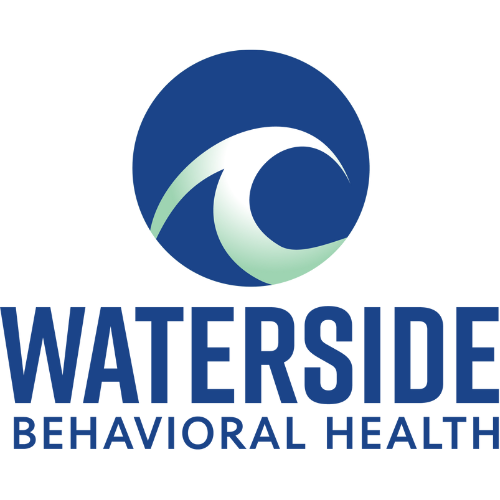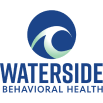What is a Toxic Relationship: Signs and Solutions Explained
What is a Toxic Relationship? Navigating relationships can be tricky, especially when distinguishing between healthy and unhealthy connections. At its core, a toxic relationship is one where patterns of harmful behavior are frequent and damaging. These relationships often cause stress and misunderstandings rather than joy and support.
In toxic relationships, negative behaviors such as manipulation, control, and disrespect are common. These issues can slowly wear one down, creating an environment of constant tension and distrust. It’s essential to recognize these signs early before they escalate and cause more harm.
Identifying a toxic relationship is crucial for personal well-being. Awareness allows individuals to make informed decisions about how to move forward, whether by seeking change, help, or taking a step back. Healthy relationships should uplift and nurture, offering a balance that enhances life rather than complicates it.
Defining a Toxic Relationship: What is a Toxic Relationship?
A toxic relationship can severely impact well-being and happiness. It’s marked by harmful behaviors and unhealthy dynamics that often lead to mental and emotional stress.
Characteristics of Toxicity
Manipulation: Those in toxic relationships may manipulate through guilt, shame, or control. This makes it hard for one partner to make free choices.
Lack of Support: There is a lack of emotional support. Instead of encouragement, there’s criticism, judgment, or indifference.
Control and Jealousy: One partner tries to control or dominate. Jealousy often follows, leading to distrust and anxiety.
Communication Issues: There are frequent misunderstandings. Conversations may turn into arguments, leading to more conflict, without resolution.
Types of Toxic Relationships
Romantic Relationships: Involve partners where love turns into control or obsession. Mistrust and manipulation replace healthy communication and mutual support.
Friendships: Include friends who belittle or use each other. These connections drain rather than uplift.
Family Dynamics: Toxic patterns may exist between family members. This includes unrealistic expectations, guilt-tripping, or withholding affection.
Workplace Relationships: Colleagues or bosses may display toxic behavior. This could be through harassment, demotion without cause, or inappropriate demands, all of which create a hostile environment.

Impact on Health and Well-being
Toxic relationships can harm both the mental and physical health of individuals. Understanding these effects can help in recognizing and addressing the signs of such relationships.
Emotional and Psychological Effects
Toxic relationships often lead to stress, anxiety, and depression. Individuals may feel worthless, isolated, or constantly anxious. Over time, they might lose self-esteem.
Victims may also struggle with trust issues, resulting in difficulty forming healthy relationships. Self-doubt and confusion can become constant companions.
In severe cases, some might experience panic attacks or signs of post-traumatic stress disorder (PTSD). Seeking support from friends, family, or professionals becomes crucial.
Physical Health Consequences
Continuous stress from toxic relationships can lead to physical health issues. Sleep disturbances, headaches, and stomach problems are common.
The body’s immune system may weaken, making one more susceptible to illnesses. High blood pressure and tension muscles are also possible effects.
Chronic stress affects heart health, increasing the risk of heart disease. Weight changes might occur due to emotional eating or loss of appetite.
Long-Term Implications
Over time, toxic relationships can result in lasting damage. People’s mental health might continue to suffer long after the relationship ends.
Ongoing anxiety and fear can become part of daily life. Relationships with others may be impacted, as trust is hard to rebuild.
Repeated exposure to toxicity may change how individuals view themselves and the world. It’s essential to seek help and learn to set healthy boundaries.
Navigating Toxic Relationships
Navigating toxic relationships involves identifying harmful behaviors, setting clear boundaries, and seeking help from resources and support systems. Each step is crucial in finding a healthier path forward and avoiding further damage.
Identifying Toxic Behaviors
Toxic behaviors in relationships can include constant criticism, manipulation, and control. Partners might isolate others from friends and family or belittle their choices and feelings.
Recognizing these signs is important. It helps people see the potential harm these behaviors can cause. Emotional and physical abuse might also appear. Name-calling, threats, and unpredictable anger are warning signs. Understanding where these behaviors come from can help someone decide what to do next.
Setting Boundaries
Setting boundaries is key to managing a toxic relationship. Boundaries define what is acceptable and what is not. They protect personal well-being and assert independence.
Communicate clearly about needs and limits. It can be difficult, but it is essential. Use “I” statements like, “I need space when I feel overwhelmed.” This approach focuses on personal feelings rather than placing blame. Stick to these boundaries consistently to reinforce them over time.
Seeking Support and Resources
Support from friends, family, or professionals is vital. It provides perspective, emotional relief, and practical advice. Trusted individuals can offer a safe space to share experiences and feelings.
Various resources also exist, like therapy and support groups, which provide professional guidance. They can help someone understand their situation and explore options. Hotlines and online resources offer immediate help. Reaching out can feel daunting, but it empowers individuals to make informed decisions about their relationships.
Moving Forward
After a toxic relationship, the journey to healing and establishing healthy connections is crucial. It’s essential to focus on self-care and growth, setting the foundation for positive future relationships.
Healing After a Toxic Relationship
Healing begins with self-reflection. One must acknowledge their emotions without judgment. Self-care is key, including activities like yoga or journaling to process feelings. A support system of friends or counselors can provide guidance and encouragement.
Setting boundaries is another important step. Recognizing personal needs and limits helps prevent repeating toxic patterns. Therapy is beneficial to explore root issues and develop coping strategies. Being patient with oneself during this process is vital, as healing takes time. Cognitive Behavioral Therapy (CBT) is a common modality used for healing.
Building Healthy Relationships
To build healthy relationships, one must first identify what they value most in a partner. Mutual respect and trust are non-negotiable. Communication should be open and honest, ensuring both parties feel heard and understood.
Spending time together doing activities both enjoy strengthens the bond. Recognizing and resolving conflicts respectfully is crucial. Small acts of kindness and expressing appreciation can enrich the connection.
Learning from past experiences helps in creating a more fulfilling and lasting relationship. Continuous growth together and individually strengthens the partnership. Practicing empathy and understanding keeps the relationship balanced and healthy.
Frequently Asked Questions
Toxic relationships can severely impact emotional well-being and mental health. Recognizing signs early can prevent further harm and help individuals make informed decisions.
What are the common signs that indicate a relationship is toxic?
A toxic relationship often involves disrespect, constant criticism, manipulation, jealousy, and control. Conflicts are frequent, and one partner may feel drained or unworthy.
How can one recognize early indicators of a toxic relationship?
Early indicators include consistent feelings of dread, fear of expressing oneself, and noticing a lack of support or understanding from the partner.
In what ways can toxic relationships affect mental and psychological health?
Toxic relationships can lead to anxiety, depression, low self-esteem, and increased stress. Such relationships might also affect sleeping patterns and lead to emotional exhaustion.
What steps should be taken to address or fix a toxic relationship?
Addressing the relationship requires honest communication and setting clear boundaries. Seeking professional help, such as therapy, can offer guidance. Both partners must be willing to change.
How can someone disengage from a toxic individual they still have strong feelings for?
They can start by reaching out for support from friends or family and setting firm boundaries. Gradually reducing contact and focusing on self-care can help in moving on.
What behaviors are typically displayed by a toxic partner?
Common behaviors include jealousy, possessiveness, blame-shifting, lying, and lack of empathy. A toxic partner might also try to isolate the other from friends and family.




